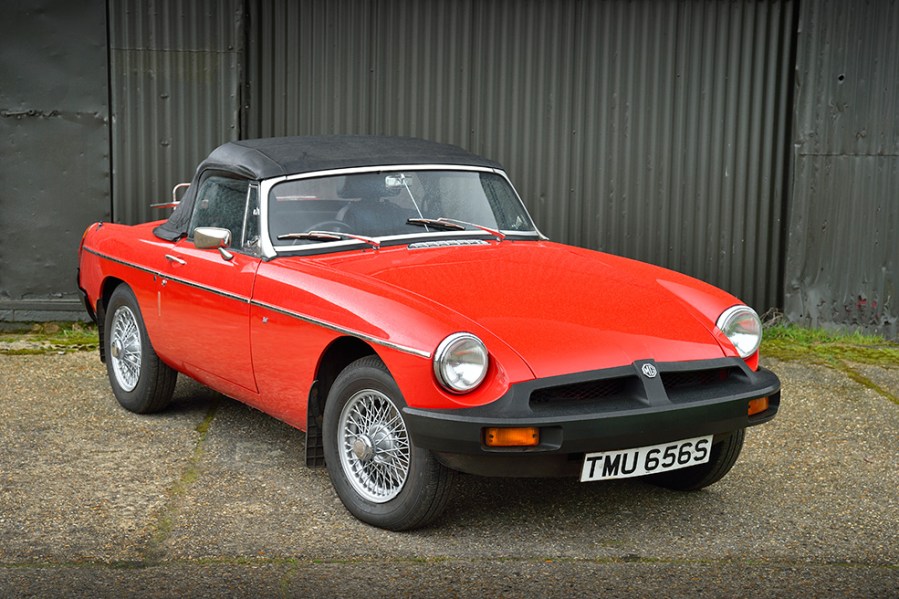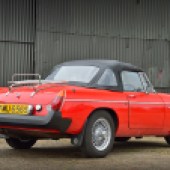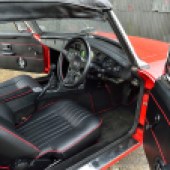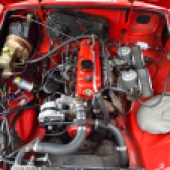Classics World’s Chris Stacey test drives and reviews the 1978 MGB Roadster…
From the moment the MGB was introduced, the Abingdon factory had a runaway sales success both sides of the Atlantic. With sporting looks that were simultaneously up to date and sufficiently traditional to have wide appeal, Syd Enever’s monocoque design was ideal for a sportscar of the Sixties. The gutsy performance of the 1.8 litre B-Series engine combined with predictable handling sealed the deal.
However, by the early Seventies, US regulators were toughening their crash test rules. Despite being one of the first car bodies to include crumple zones to protect occupants, the B couldn’t meet the new 5mph impact test and didn’t comply with the latest minimum height requirements for car bumpers. The venerable B-Series engine also struggled to meet the latest emissions standards, so perhaps the obvious route for MG would have been a brand new model. However, British Leyland’s board room politics made such a decision impossible.
Demand for the ageing B continued and Abingdon desperately needed to maintain its American approval. Today, it’s well known that MG managed to satisfy the regulators by fitting large energy-absorbing black rubber bumpers front and back and increasing ride height by one inch. Add in a de-tuned engine to meet emissions standards and the ‘updated’ MGB introduced for the 1975 model year was never going to inspire the traditionalists. In fact the rubber bumper MGB continued to sell in decent numbers, with around 150,000 roadsters shifted by the time production ceased in 1980. That represents almost one third of all the roadsters ever built.
So how good or bad is the rubber bumper B in reality? Apart from the appearance and emission de-tuning, it remains an MGB in pretty well every other respect. The monocoque bodyshell is strong and stiff, the B-Series engine is still a torquey power unit, driving through the familiar four speed overdrive ‘box and leaf sprung rear axle. At the front there’s twin-wishbone suspension with lever-arm dampers and large disc brakes, with a servo and dual circuit pipework that was lacking from the earliest cars. Excluding a few inches of black rubber front and back, it is still very much an MGB.
Our test car today is a 1978 model in glowing BL Flame Red paint and is currently for sale at Norfolk-based specialist dealer and restorer MG Mecca. Proprietor Russell Storer is more than a marque specialist, he’s a true MG enthusiast and extremely knowledgeable. He says of this car: ‘it’s unusual because the wire wheels are from the factory and were a very expensive option that few buyers chose at the time’. He adds that the previous owner has spent lavishly looking after the car, which has a very smart black interior with recently added leather seats and a stainless exhaust.
Externally, the body looks perfectly straight, it’s rust-free and the paint is in fine condition. Under the bonnet, the engine bay is clean and tidy. There are a few subtle upgrades on show, including K&N air filters for the twin SU carbs and a Revotec cooling fan.
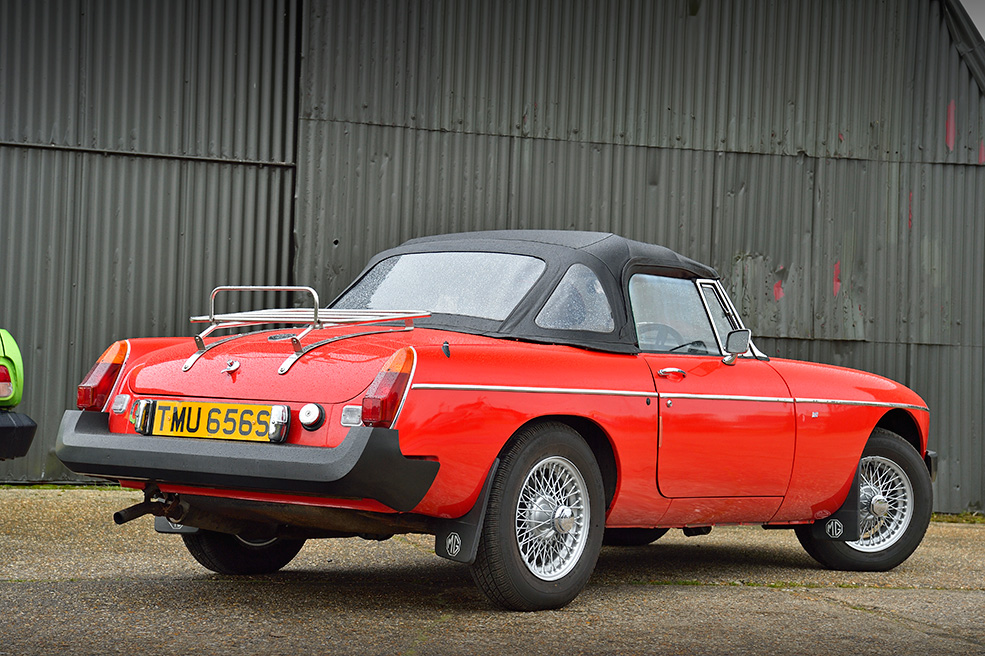
Climb into the cockpit and it’s snug rather than cramped, with a feeling of sitting fairly high on the leather seats which have clearly had new foams fitted during the re-trim. The black crackle finish dash is typical B, with Smiths speedo and rev counter ahead of the driver, interspersed with smaller gauges for oil pressure, fuel and temperature. Heater knobs and a clock reside in the centre console, all the instruments and controls working perfectly. In short, this cabin is extremely well presented and gives a pleasingly traditional feel.
The engine starts easily, shows good oil pressure and it’s got that growling exhaust note so characteristic of the MGB, enhanced no doubt by the aftermarket stainless steel exhaust system. On the move, the car feels responsive and the suspension is taut. The gear lever gate is narrow and precise, typically MG, and the overdrive switch sits conveniently in the top of the gear knob. Performance from the emission controlled engine is perfectly satisfactory for normal road use, and it’s likely any slight power deficit would only become apparent towards the upper end of the rev range. This engine’s performance is fine for everyday driving and it’s clearly in good mechanical health. The rack and pinion steering is nicely weighted, not too heavy when parking, not too low geared and free from excessive play.
Overall, this rubber bumper MGB is a great example of a classic British roadster and gives an almost identical driving experience to its chrome bumper forerunners. If you enjoy driving MGs of the chrome bumper variety, put aside any rubber bumper prejudice and you really should enjoy this version too. Better still, rubber bumper MGBs like this one continue to sell at a discount compared to the earlier models.
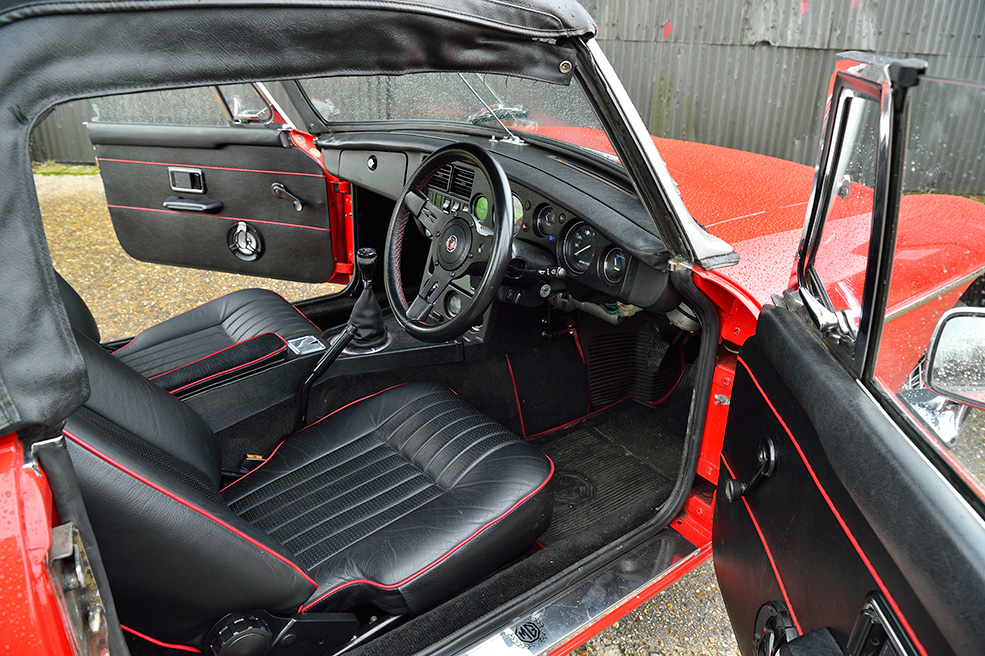
Verdict
Any MGB has a charm that can’t be denied, harking back to the glory days of British roadsters. This particular B is in excellent condition, with straight rust-free panels and a smart interior with newish leather. The car’s previous owner has clearly spent wisely on upkeep. Mechanically it’s also in great fettle and drives very well. If you’re looking for a top class MGB but don’t want to pay the higher prices demanded for chrome bumpers, this car could well be for you.

Technical Specification
Engine: 1,798cc straight-four
Power: 84bhp
Top Speed: 99mph
0-60mph: 14secs
Economy: 22mpg

